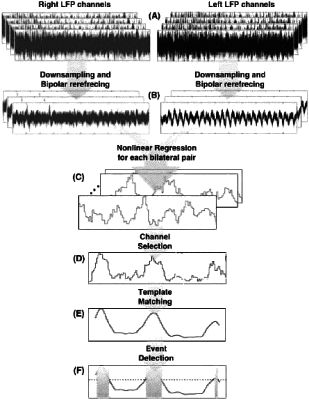| CPC A61B 5/377 (2021.01) [A61B 5/316 (2021.01); A61N 1/0534 (2013.01); A61N 1/36067 (2013.01); A61B 5/11 (2013.01); A61B 5/291 (2021.01); A61B 5/4082 (2013.01)] | 1 Claim |

|
1. A method for using electrophysiological signals to detect motor events by a subject, the method omprising:
using deep brain stimulation devices implanted in a left hemisphere of a brain of the subject to measure left local field potential (LFP) signals from the left hemisphere of the brain;
using deep brain stimulation devices implanted in a right hemisphere of the brain of the subject to measure right LFP signals from the right hemisphere of the brain; and
with a processor:
bipolar re-referencing each of the left LFP signals and the right LFP signals to produce a plurality of bilateral pairs of bipolar re-referenced left and right LFP signals;
using nonlinear regression to estimate nonlinear correlation between the plurality of bilateral pairs of bipolar re-referenced left and right LFP signals;
determining an optimal pair of electrophysiological signals from the plurality of bilateral pairs of bipolar re-referenced left and right LFP signals;
matching the optimal pair of electrophysiological signals with a template; and
detecting motor events from the matching.
|